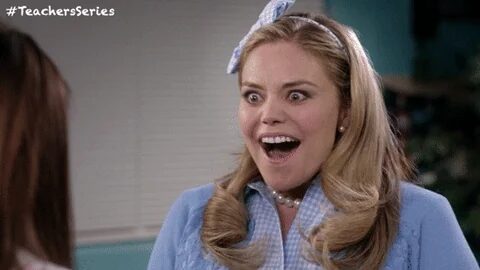Teaching is both an art and a science, and every great teacher has a few tricks up their sleeve to keep their classroom running smoothly. These aren't just ordinary methods—they’re clever, tried-and-true strategies that help teachers manage their classrooms, engage students, and make learning more effective. Here are the top 10 classroom secrets every teacher uses, even if they don’t always reveal them!
-
The Magic of Routine
- One of the most powerful tools in a teacher’s arsenal is a consistent routine. By establishing predictable patterns for the day, teachers help students feel secure and focused. Whether it’s a morning warm-up or a specific way of transitioning between activities, routines keep the classroom calm and students on task.
- One of the most powerful tools in a teacher’s arsenal is a consistent routine. By establishing predictable patterns for the day, teachers help students feel secure and focused. Whether it’s a morning warm-up or a specific way of transitioning between activities, routines keep the classroom calm and students on task.
-
The Silent Countdown
- When it’s time to get the class’s attention, many teachers use the silent countdown. Instead of raising their voice, they start counting down from five in their head. By the time they reach zero, students are expected to be quiet and ready to listen. This trick works like magic and helps maintain a peaceful atmosphere.
- When it’s time to get the class’s attention, many teachers use the silent countdown. Instead of raising their voice, they start counting down from five in their head. By the time they reach zero, students are expected to be quiet and ready to listen. This trick works like magic and helps maintain a peaceful atmosphere.
-
Proximity Control
- Teachers know that simply standing near a student can prevent misbehavior. This subtle strategy, known as proximity control, is highly effective. Without saying a word, a teacher can guide students back to focus just by moving closer to them.
- Teachers know that simply standing near a student can prevent misbehavior. This subtle strategy, known as proximity control, is highly effective. Without saying a word, a teacher can guide students back to focus just by moving closer to them.
-
The Teacher Stare
- “The Look” is a classic teacher move that needs no words. When students are getting off track, a well-timed stare can quickly bring them back in line. This look is both firm and calm, letting students know it’s time to refocus.
- “The Look” is a classic teacher move that needs no words. When students are getting off track, a well-timed stare can quickly bring them back in line. This look is both firm and calm, letting students know it’s time to refocus.
-
Praise in Public, Correct in Private
- Great teachers know that positive reinforcement is key to encouraging good behavior. They praise students publicly for their efforts and successes, boosting confidence. However, when it comes to correcting behavior, they do so privately to avoid embarrassment and to maintain the student’s dignity.
- Great teachers know that positive reinforcement is key to encouraging good behavior. They praise students publicly for their efforts and successes, boosting confidence. However, when it comes to correcting behavior, they do so privately to avoid embarrassment and to maintain the student’s dignity.
-
The Art of Questioning
- Teachers are masters of asking questions in a way that promotes deeper thinking. They use open-ended questions to spark discussion, challenge students to explain their reasoning, and guide them to discover answers on their own. This method keeps students engaged and promotes critical thinking.
- Teachers are masters of asking questions in a way that promotes deeper thinking. They use open-ended questions to spark discussion, challenge students to explain their reasoning, and guide them to discover answers on their own. This method keeps students engaged and promotes critical thinking.
-
Strategic Seating Arrangements
- Where students sit can make a big difference in classroom dynamics. Teachers often place talkative students near quieter ones, or seat those who need extra help closer to the front. By thoughtfully arranging seating, teachers can create a more productive learning environment.
- Where students sit can make a big difference in classroom dynamics. Teachers often place talkative students near quieter ones, or seat those who need extra help closer to the front. By thoughtfully arranging seating, teachers can create a more productive learning environment.
-
Planned Pauses
- Sometimes, less is more. Teachers use planned pauses during their lessons to let important points sink in or to build anticipation. These pauses give students a moment to process information, making the lesson more effective and memorable.
- Sometimes, less is more. Teachers use planned pauses during their lessons to let important points sink in or to build anticipation. These pauses give students a moment to process information, making the lesson more effective and memorable.
-
Interactive Lessons
- Teachers know that active learning is more effective than passive listening. They incorporate games, group work, and hands-on activities into their lessons to keep students engaged. This not only makes learning fun but also helps students retain information better.
- Teachers know that active learning is more effective than passive listening. They incorporate games, group work, and hands-on activities into their lessons to keep students engaged. This not only makes learning fun but also helps students retain information better.
-
Building Relationships
- Perhaps the most important trick of all is building strong relationships with students. When students feel respected and understood by their teacher, they are more likely to be motivated, cooperative, and open to learning. Teachers invest time in getting to know their students, which makes the classroom a more positive and supportive space.
These “tricks” may seem simple, but they are the result of years of experience and understanding of what works best in the classroom. Teachers don’t just teach subjects—they manage behavior, create a positive learning environment, and inspire students to reach their full potential. The next time you see a teacher in action, you might just recognize a few of these clever strategies at play!

